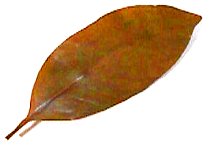Split Pea Soup
With Andersen's Pea Soup restaurant just 30 minutes or so down the road you'd
think making split pea soup would not be high on the priority list. Wrong.
Customized soup is one of the joys of cooking; you can make it exactly the
way you want it. Here's my way.

Ingredients:
- Start with a package of peas (I typically use a 16 oz package as I don't
have a pot large enough to cook more conveniently.

- Next, gather some spices (Garlic Powder, Mrs. Dash, Oregano, Bay Leaf, Chicken
Boullion-2 Tablespoons or 2 cubes)





- Some other vegetables (chopped onion-medium and carrots-3 medium or so)


- Finally, ham (this is a good use for a saved ham bone with meat still on
it or, if not available, a ham steak)

Directions:
- Clean the peas. Rinse them in a sieve or colander and then carefully sort
through them to find any rocks that might have made their way into the peas
(rare, but better safe than to have a large dental bill). Hint: Don't try to rinse a whole package of peas at once, rinse a handfull or two at a time, sort and then put into the cooking pot and then go back and do the rest in small batches. [Some people soak
the peas for some period but I find this unnecessary.]
- Chop the onion into small pieces. Cut the ham into small chunks (if you
have a ham steak).
- Find a large deep pot (4 quarts at least). Add 3 quarts of water (12 cups),
the peas, the ham shank or pieces, the chopped onion, and all the seasonings.
Bring to a simmer and cook uncovered at a simmer for one and a half (1.5)
hours. You will need to stir the mixture every 15-20 minutes or so to keep
the peas from sticking and you might consider using a heat diffuser (see notes)
to help even out the heat. [Note: When using a ham bone consider taking some of the water and cooking the bone in a pot of its own and then, after it's cooked out you can strain the results into the pea pot and catch any pieces of bone that might have fallen off. This is important for both safety reasons and because a piece of bone in the blender (see instructions later) will cause havoc.]

- While the soup is cooking cut the carrots into very thin slices. You should
use around 1.5 to 2 cups.
- After 1.5 hours of cooking, remove the ham shank and clean the meat off
the bone (it should be loose by now); you won't have to do this step if you
used a ham steak. Add the carrots and continue cooking at a simmer uncovered
for another two and a half (2.5) hours. Don't forget to stir now and again;
particularly since by now the peas should be mushy; they sink to the bottom
and the ingredients need to mix. At the end of the time the mixture should
have cooked down some.
- At this point you have two choices. Some people like their pea soup chunky.
If you do, stir it up and serve. If, like me, you don't, there is one final
step. You need to use a blender to combine all the ingredients. Simply ladle
the soup into the blender, blend smooth, and pour into another pot (start
the blender on slow and increase the speed slowly or you might have to eat
your soup off the walls!). Keep doing this until all the soup is blended
and then stir the pot to make certain everything is well mixed. Now you can
serve and enjoy. (You can also control the consistency by holding out some
of the chunky material and adding it to the blended soup if you like; or,
cut time in the blender and blending speed to make a chunkier mixture.)

Lower Fat:
- The ham in this recipe contains most of the fat so in order to reduce fat
you will have to either eliminate the ham steak or perhaps substitute a lower
fat ham (like the low-fat pressed sandwich ham you can find in the deli section
of the market).
Notes:
- You want to try to keep the heat on the pot even when cooking pea soup.
The peas will have a tendency to stick to the pot if you don't. Particularly
when using a gas stove (the kind I like because of the instant control) you
might want to consider using a heat diffuser under the pot. You can find one
in most gadget stores.

- There is a great deal of flexibility in this recipe. Change the spices;
leave out the ham if you don't like meat products; add some chopped celery;
blend or not; etc., etc. Don't be afraid to experiment; it's hard to turn
out a bad pot of pea soup.
- Do not attempt to speed up the process by trying to cook the peas
in a pressure cooker. Did that and discovered how much peas foam and jam up
the steam escape valve. Caught it before damage was done; but if you try this
and leave the kitchen be prepared to come back and find peas on the ceiling!
Comments? Please use the contact
page form.
Copyright © 2002-2008
Tom Simondi, All Rights Reserved














